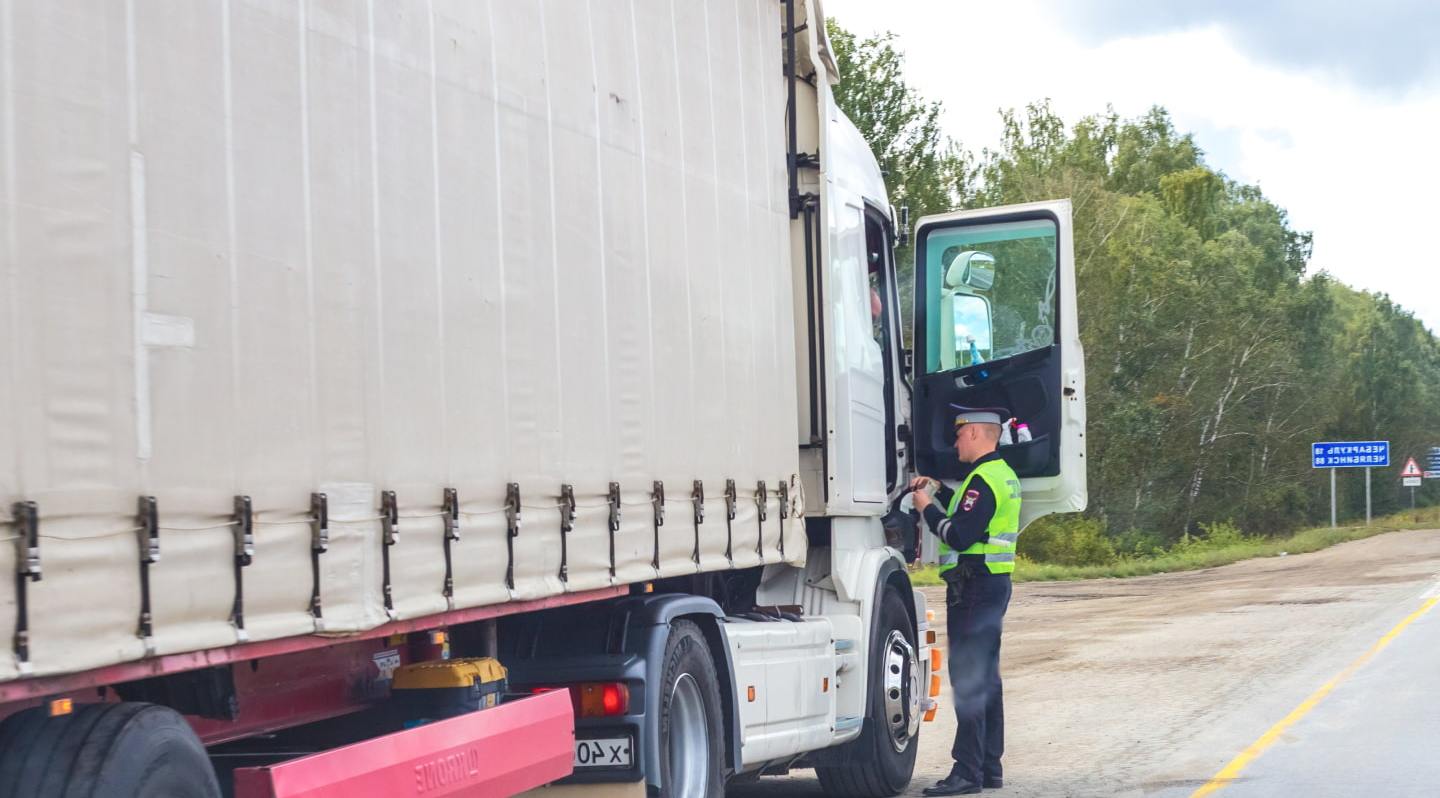The ELD mandate is going to solve a lot of trucking-related problems.
Truck drivers will be able to avoid driver coercion, prevent Hours of Service violations, reduce the number of accidents and crashes, earn more money, and improve safety.
While the focus right now is the upcoming FMCSA’s ELD mandate, the various benefits of the ELD rule, and its implementation, truckers are encountering roadside inspections every day.
More recently, the CVSA released the results of Roadcheck Inspection 2017. During that 72-hour inspection blitz, 19.4% of commercial vehicles and 4.7% commercial drivers were placed out of service. In light of these numbers, commercial drivers, fleet managers, and carriers should be prepared for roadside inspections.
We believe that a lack of awareness is one of the major reasons for increased violations and out-of-service vehicles and truck drivers.
To help create the necessary awareness to minimize violations as much as possible, we created this complete guide to understanding roadside inspections.
In this guide to roadside inspections, we’ll cover:
- The eight different levels of roadside inspections.
- Tips for successfully passing roadside inspections.
- A brief recap of the CVSA International Roadcheck 2017, and what we could learn from it.
- How ELDs are going to help commercial drivers with roadside inspections.
Ready? Let’s start.
8 levels of roadside inspections
There are eight different types of roadside inspections that CVSA safety inspectors usually conduct. Consider these eight types as eight different levels of roadside inspections.
These levels aren’t necessarily in ascending or descending order. However, the Level-1 inspection is the most comprehensive one, but it does not mean that the Level-8 inspection is the least comprehensive.
Furthermore, most truckers recognize only seven levels of roadside inspections. It is because the eighth category of roadside inspection is a new one that is only getting popular in the digital age. We’ll cover this more at the end of this section.
Level 1 Roadside Inspection — North American Standard Inspection
The Level 1 Roadside Inspection, which is also known as the North American Standard Inspection, is the most comprehensive of all the different types of roadside inspections.
It is a 37-step procedure during which the CVSA safety inspector examines the commercial motor vehicle (CMV) as well as the commercial driver.
The vehicle inspection category includes examining the following items:
- Suspension, Tire, Rim, Hub, Wheel assemblies
- Open-top trailer and van bodies
- Windshield wiper operations
- Emergency exit
- Steering mechanisms
- Driveline/driveshaft mechanisms
- Lightning device and coupling operations
- Cargo securement
- Hazardous material and cargo tank specification compliance
- Braking systems
- Electrical systems
- Exhaust systems
- Fuel systems
On the other hand, driver inspection during the Level 1 North American Standard Inspection includes examining the following driver-related items:
- Seatbelt usage
- Possible drug and alcohol usage
- Medical examiner’s certificate
- Skill Performance Evaluation (SPE) certificate
- Commercial driver license (CDL)
- Hours of Service or HOS compliance
- Record of Duty Status or RODS compliance
Level 2 Roadside Inspection — Walk-Around Driver or Vehicle Inspection
The Level 2 Roadside Inspection refers to the walk-around only driver or vehicle inspection. As the name suggests, it only involves examining items that can be fully examined without the inspector having to physically go under the vehicle.
In the Level 2 Roadside Inspection, the safety inspector usually examines the following:
- The commercial driver license
- Medical examiner’s certificate
- Skill Performance Evaluation (SPE) certificate, if it is applicable.
- Driver’s Record of Duty Status (RODS)
- Driver’s Hours of Service (HOS)
- Alcohol and Drugs
- Seatbelt
- Vehicle inspection report(s), in case it is applicable.
- Brake systems
- Cargo securement
- Coupling devices
- Exhaust systems
- Driveline/driveshaft
- Fuel systems
- Frames
- Lighting devices, which includes headlamps, tail lamps, stop lamps, turn signals, lamps or flags on projecting loads
- Steering mechanisms
- Suspension
- Tires
- Van and open-top trailer bodies
- Rims and hubs
- Wheels
- Windshield wipers
Level 3 Roadside Inspection — Driver Credential Inspection
The Level 3 Roadside Inspection is limited to driver credential inspections. It specifically includes a few items that can be examined under Level 3 inspections. If there are items that are not indicated in the Level 3 Driver/Credential Inspection, the examination of those items cannot be placed under this level of roadside inspection.
During the level 3 Roadside Inspection, inspectors examine — when required or applicable — the following:
- The commercial driver license
- Medical examiner’s certificate
- Skill Performance Evaluation (SPE) certificate
- Driver’s Record of Duty Status (RODS)
- Hours of Service
- Seatbelt usage
- Vehicle inspection reports
Level 4 Roadside Inspection — Special Inspections
The Level 4 Roadside Inspection is slightly different than Level 1, 2, and 3 inspections.
Examinations that fall under the Level 4 Roadside Inspection typically include a one-time examination of a particular item. More often than not, this type of examination happens to either support or refute a study or a suspected trend.
Level 5 Roadside Inspection — Vehicle-Only Inspection
Remember the vehicle-related inspection details from the Level 1 North American Standard Inspection?
The Level 5 Roadside Inspection includes all of those vehicle inspection items. It can be conducted at any location, without needing a driver to be present.
Level 6 Roadside Inspection — North American Standard Inspection for transuranic waste and highway route controlled quantities (HRCQ) of radioactive material
The Level 6 Roadside Inspection deals with the examination of radioactive materials and the way a commercial motor vehicle complies with the regulations on handling and transporting transuranic wastes and radioactive materials.
Level 7 Roadside Inspection — Jurisdictional Mandated Commercial Vehicle Inspection
The Level 7 Roadside Inspection is more unique than the other inspection levels, as it includes any jurisdictional mandated inspection program that does not meet the requirements of any other inspection level.
Usually, these jurisdictionally mandated commercial vehicle inspections apply to the following:
- School buses
- Shared-ride transportation
- Intrastate/intra-provincial operations
- Hotel courtesy shuttles
Apart from CVSA-certified inspectors, the Level 7 Roadside Inspections can be conducted by jurisdiction-approved contractors or designated government employees.
Level 8 Roadside Inspection — North American Standard Electronic Inspection
The Level 8 Roadside Inspection, or Electronic Inspection, is a relatively new inspection level, and not everyone is entirely familiar with it.
The Electronic Inspection is conducted without direct interaction with a safety officer. It is conducted wirelessly or electronically while the vehicle is in motion.
However, in order to qualify as the Level 8 Roadside Inspection, the data exchange must include all of the required and/or applicable data points that the CVSA has listed for this particular level. They are:
- A descriptive location including GPS coordinates
- Electronic validation of the vehicle’s operator
- Driver’s license class and endorsement for the vehicle being operated
- License status
- Skill Performance Evaluation (SPE) Certificate
- Medical Examiner’s Certificate
- Record of Duty Status (RODS) of the current driver
- Hours of Service compliance
- USDOT number
- Power unit registration
- Operating authority
- Unified Carrier Registration compliance
- Federal out-of-service orders
Sergeant Farnsworth on passing roadside inspections
Electronic logging devices do help when it comes to reducing violations and successfully passing roadside inspections without too much trouble.
Earlier, we talked to Sergeant Farnsworth, who’s an officer with the Iowa Department of Transportation’s motor vehicle enforcement division. He shared a few valuable tips on how to minimize the number of violations and clear roadside inspections.
“Law enforcement sees fewer hours of service violations when electronic logging devices are in use.”, Sergeant Farnsworth told Motive.
Highlighting the most common violations that inspectors see, Sergeant Farnsworth says, “Form and Manner violations are the most common violations we see. One of the advantages that a carrier and driver have by using electronic logs is the elimination of form and manner violations — missing dates, total miles, locations, and such. Electronic logs have the ability to do this automatically and they carry over information from one day to the next when a driver is hauling the same cargo. Additionally, in some cases electronic logs eliminate the driver not having their logbook current to their last change of duty status. Electronic logs will automatically record driving time for the driver and if the truck stops, it will ask the driver if he/she is ‘on-duty’ for such things as loading or fueling, or if he/she is ‘off-duty’ or ‘sleeper berth’ for a break.”
We asked Sergeant Farnsworth to share his best advice for truckers and carriers to successfully deal with roadside inspections. He said the following:
“The best advice law enforcement would give to a driver who uses electronic logs is to be organized and make sure they are properly trained on how to use the system and be prepared to assist the officer as needed. When drivers are organized and knowledgeable it adds to the professionalism of their craft, it also helps make the inspection go much more smoothly and creates a less stressful experience for the driver. Less time in a law enforcement vehicle means more time on the road.”
Motive exclusive data on violations and inspections
Earlier this year, we analyzed important Motive data, and it provided some valuable insights into common violations and roadside inspections.
You can find the complete information here: Analyzing Motive Data: 4 Valuable Insights for Drivers & Fleet Managers.
For a summarized version, continue reading:
Following are the three biggest lessons that drivers and carriers could take from that data, which would eventually help them avoid the most common violations as well as pass roadside inspections with considerable ease.
Lesson #1: Level-1 inspections are very common
As mentioned earlier, Level-1 inspections are the most comprehensive type of roadside inspection. It is a 37-step long procedure that examines commercial drivers as well as commercial motor vehicles.
Because of how comprehensive a Level-1 inspection usually is, we often assume that it is not going to be very common. However, contrary to common belief, our data reveal that Level-1 inspections are more common than most people believe it to be.
However, there is a catch.
Although Level-1 inspections are very common, they largely depend on the type of cargo you are carrying. For instance, driveaway towaway vehicles get the most level-1 inspections. On the other hand, if you are carrying coal, you are likely to get the least Level-1 inspections.
With the help of this data, you can see what type of cargo you usually carry and how many Level-1 roadside inspections can you expect, so you can prepare for it.
Lesson #2: Vehicle-related violations are more common
Based on our data, we found out that most of the violations are related to vehicles.
Following are the five biggest violations that we found when we analyzed our data:
- 704,167 violations were related to Section 393.9 (a) — All mandatory lamps should be capable of being operated at all times.
- 293,118 violations were related to Section 396.3 (a) (1) — Parts and accessories must be in safe and proper operating condition at all times.
- 190,337 violations were related to Section 392.2 — Every commercial motor vehicle must be operated in accordance with the laws, ordinances, and regulations of the jurisdiction in which it is being operated.
- 189,981 violations were related to Section 396.5 (b) — The motor vehicle should be free of oil and grease leaks.
- 181,320 violations were related to Section 393.47 (e) — The pushrod stroke must not be greater than the values specified.
So these are the top 5 most common violations that we spotted by analyzing Motive data.
Before you go out on the road next time, you should make sure that you are not violating one or more of these vehicle-related violations. Otherwise, roadside inspections could be difficult for you to deal with.
Lesson #3 — HOS violations in different states
The last big lesson that you could learn from Motive data is that different states in America may have different levels of strictness and violations. In other words, if you are driving in certain states, you are more likely to be found violating an Hours-of-Service regulation.
However, if you know which states are more strict, you could plan accordingly.
The top three states with the highest violation rates are:
- Connecticut — 81%
- Idaho — 82%
- Louisiana — 91%
On the other hand, the top three states with the least violations rates are:
- Mississippi — 31%
- South Dakota — 31%
- Massachusetts — 33%
A brief recap of CVSA’s roadcheck 2017 results
A few weeks ago, the CVSA released the results of their latest inspection blitz — the CVSA International Roadcheck 2017.
The special focus of this 72-hour event this year was “cargo securement.” During the three-day event, 40,944 inspections happened in total. The majority of those inspections had Level-1, Level-2, and Level-3 inspections. Moreover, 19.4% CMVs and 4.7% drivers were placed out of service because of those 40,944 inspections.
We found that brake systems were the number one vehicle-related violation. 41.4% vehicles (7,743 vehicles) were placed out of service because of brake-related violations. On the other hand, Hours-of-Service violation was the most common driver-related violation.
Electronic logging devices could evade both these types of violations.
ELDs resolve Hours of Service problems by automatically logging hours and alerting drivers and carriers for any upcoming HOS violation. Moreover, many ELDs are also equipped with vehicle diagnostic features that would have alerted drivers and fleet managers about the brake-system problem.
If you want to learn more about the results, you can read CVSA’s Roadcheck 2017 results.
Here are the details of the driver-related violations during this year’s inspection blitz.
And here is everything you’d need to know regarding the vehicle-related violations during the event.
Final words
Now you know pretty much everything there is to know regarding roadside inspections, most common violations, and how to minimize these violations and successfully pass roadside inspections.
It’s important to realize the value of electronic logging devices in all this.
As Sergeant Farnsworth said, drivers who use ELDs violate fewer regulations, and that is the key to successfully passing inspections without any violations.
If you are looking for a robust, FMCSA-registered, and feature-rich ELD solution, try Motive.
Request a free demo now.







